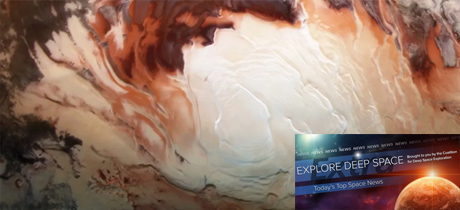In Today’s Deep Space Extra… Artemis I stacking continues. Hubble still struggling with computer issues.
Human Space Exploration
Artemis I SLS stacking work running long, preps for integrated tests continue in parallel
Coalition Member in the News – Jacobs
NASAspaceflight.com (6/28): Mating of the Artemis I Space Launch System (SLS) core stage and the Launch Vehicle Stage Adapter (LVSA) at NASA’s Kennedy Space Center (KSC) has slowed a bit due to some difficulties discovered as the two elements were bolted together. However, they were resolved over the past weekend, as other work continued in parallel. Mating of the Interim Cryogenic Propulsion Stage (ICPS) should start as soon as the middle of this week.
Space Science
No quick fix for Hubble Space Telescope’s computer glitch, NASA says
Space.com (6/28): The Hubble Space Telescope continues with efforts to overcome an issue that first surfaced on July 13, halting science operations. The observatory has two payload computers that are part of the Science Instrument and Command and Data Handling (SI C&DH) unit developed in the 1980s prior to Hubble’s launch, and installed in the final servicing mission in 2009. Both computers are having the same issue, suggesting the difficulty may lie elsewhere. Engineers are now investigating other hardware that may be causing the issue, including the Command Unit/Science Data Formatter (CU/SDF) and the power regulator. “If the voltage is out of limits, it could cause the problems observed,” NASA officials said.
Mars may have dozens of lakes beneath its south pole
Space.com (6/28): In 2018, data from the European Space Agency’s (ESA) Mars Express pointed to a large subsurface lake, about 12 miles wide, at the south pole of Mars. A follow-up study also using Mars Express suggested the presence of three more lakes in the south pole region, each about six miles wide. Now, a third study led by an Arizona State University researcher and the co-principal investigator for the Mars Express’s Mars Advanced Radar for Subsurface and Ionospheric Sounding instrument found evidence for dozens of subsurface lakes in the region due perhaps to volcanism. However, the source of the latest signals is not clear and more investigation will follow.
Japan aims to get Mars moon sample in fiscal 2029
NHK of Japan (6/29): The Japan Aerospace Exploration Agency (JAXA) plans the 2024 launch of a mission to bring samples of the Martian moon Phobos back to Earth in 2029, according to a goal set by Japan’s strategic council. (Editor’s note: NHK is Japanese state-owned news outlet).
Opinion
Before you go, Administrator Nelson
The Space Review (6/28): NASA should take on the role of venture capital investor in the development of a successor to the International Space Station (ISS), or ISS-2, writes Roger Handberg, professor of political science at the University of Central Florida, in an op-ed. “Commercial space participants are assumed to build the space stations of the future. But at this time, most appear as tourist destinations, hotels, and similar ventures. A general-purpose space station is unlikely at this point,” according to Handberg. The author suggests that it’s up to NASA Administrator Bill Nelson to lead a strategy that opens the door to space for all nations based on lessons learned from the station.
Global space traffic management measures to improve the safety and sustainability of outer space
Coalition for Deep Space Exploration’s Jamil Castillo in the News
The Space Review (6/29): The rise in the number of satellites and debris in Earth orbit poses risks to space operators in all countries. At the same time, humans all over the world benefit from space technology. In an essay, Jamil Castillo, a graduate of the McGill Institute of Air and Space Law, explains why space traffic management solutions need therefore to take global measures, including capacity building, national and international coordination, and transparency.
Other news
NASA awards $2.5B enterprise IT contract to Leidos
Coalition Member in the News – Leidos
Fedscoop (6/28): The space agency awarded Leidos a 10-year Advanced Enterprise Global IT Solutions (AEGIS) contract, which will replace the NASA Integrated Communications Services (NICS) contract and will ensure that wide-area and local-area network infrastructure connects seamlessly.

